Increased Forage Value Could Offer Vets More Stocker Opportunity
Grass is worth too much to waste on a second-rate animal. As the value of forage increases, so does the need for a herd health professional in stocker operations.
August 29, 2013
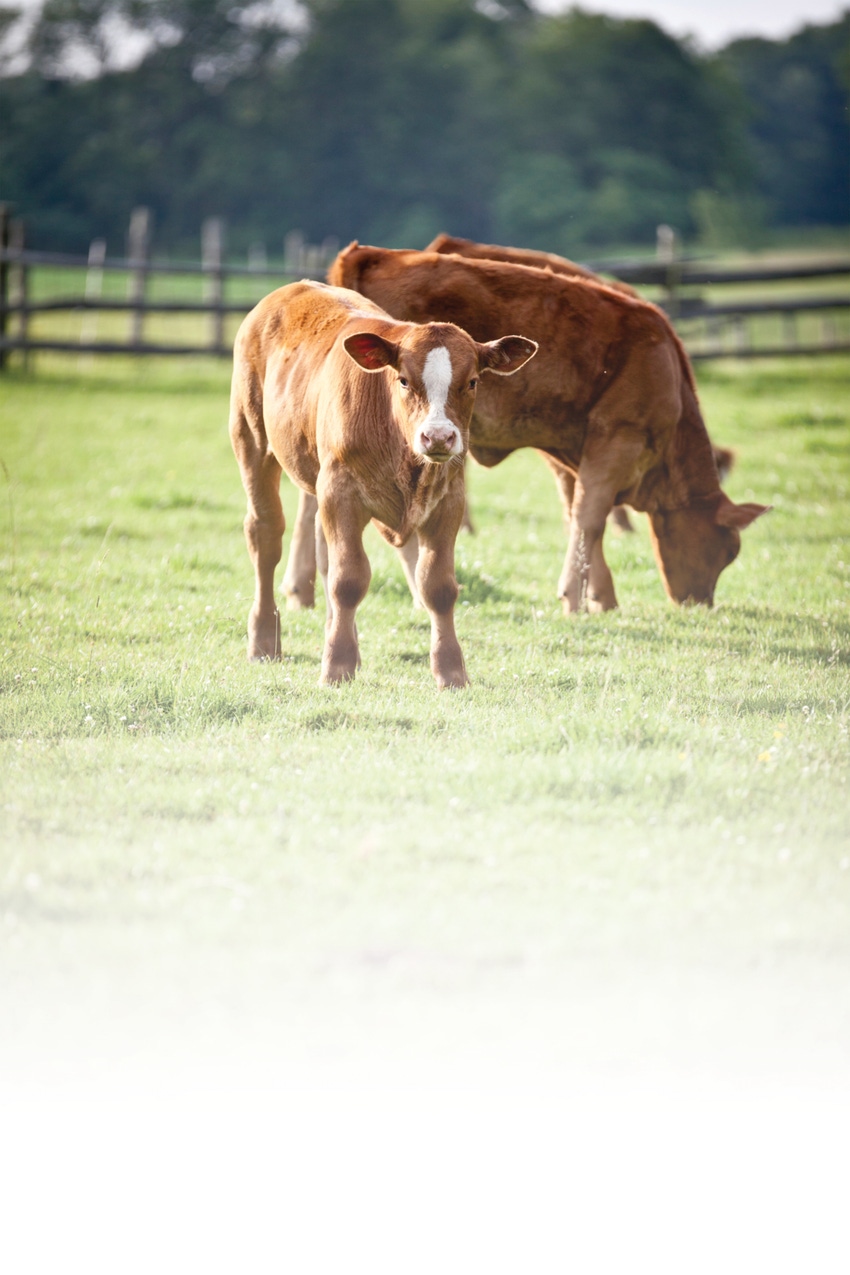
As we continue to see stocker operations get more business minded, I think there can be a growing role for veterinarians,” says Shaun Sweiger, DVM of Sweiger Enterprises, LLC based in Oklahoma City.
There’s a certain hesitancy in his observation. Unlike the cattle feeding sector, consulting veterinarians are still a rarity in the stocker world. Some veterinarians have little understanding of this specialized sector. The number of operations devoted to stocker production appears to be dwindling in tandem with declining cattle numbers, drought conditions and increased concentration.
On the other hand, even if corn prices retreat to the $4-$5/bushel range, that’s still at least twice the price that served as the foundation to modern day commercial cattle feeding. Since forage cost of gain closely mirrors feedlot cost of gain, out of economic necessity, forage continues to have more value in historical terms. Push come to shove, for the same cost or close to it, many feedlots would just as soon buy the pounds and have someone else straighten out the calves.
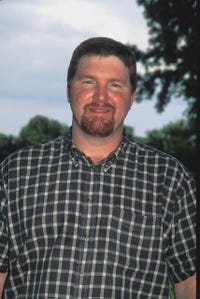
Shaun Sweiger, DVM, Sweiger Enterprises, LLC
“I know we can put gain on cattle with grass cheaper than with any other feedstuff. Because of the stress of commingling and other health challenges, there is plenty of opportunity for stockers who can provide calves more TLC than a large, rigidly run feedyard concerned about labor,” Dr. Sweiger says.
For stocker producers willing to color beyond the proverbial lines of convention, the opportunities are richer yet.
Driving Change With Data
“I want to challenge their practices and what they think, and I want them to challenge my practices and what I think,” Dr. Sweiger says.
Dr. Sweiger is talking about the clients he serves in general terms, but specifically about the stocker operations he works with.
Consider the Gallery Ranch at Dewey, OK.
“Grass is worth too much to waste on a second-rate animal. Gain is worth too much,” says Tom Gallery, who manages the operation with his brother, Bill, and their dad, Dan.
Consequently, this was the third summer that the Gallerys shipped rather than grazed any calf treated more than once in their backgrounding program. Identifying the net economic benefit associated with the decision was enabled by the intensive real-time records and analysis system that Dr. Sweiger helped the Gallerys build.
“If we have a problem, there is no way to solve it if we don’t have the information recorded,” Gallery says. “With records, a record system and information in a format both Shaun and I can evaluate, we know what’s happening in real time rather than 90 days after the fact.”
Before Dr. Sweiger started working with them, the Gallerys recorded information on note cards. “It wasn’t until after the cattle were gone that we could tally up what had happened,” Gallery emphasizes.
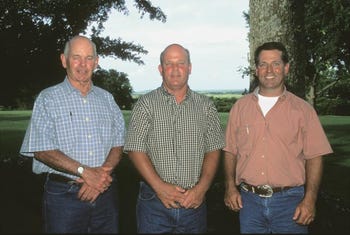
Dan, Bill and Tom Gallery, Gallery Ranch, Dewey, OK
These days, the Gallerys use feedlot-based software to track cost as well as cattle health and performance.
“It’s mostly for ourselves, but if you wanted to partner on a set of cattle tomorrow, I could send you a feed bill and a breakeven,” Gallery says. “The only way to know if you’re making money is if you keep track of the costs. It’s our only way to identify the ones that make us money.”
Ask Dr. Sweiger what skills a veterinarian needs to serve stocker clients that are different than those needed to serve cow-calf clients and he responds immediately, “It’s records and data management.When a stocker operation gets to a certain size, I don’t care how good their memory is, you need to help them keep records and analyze the data.”
Interested in more beef industry news? Subscribe to BEEF Daily for the latest beef hot topics Monday-Thursday.
Dr. Sweiger points out collecting real-time data doesn’t have to be complicated. While the system is more sophisticated and automated with Gallery Ranch, for other clients, Dr. Sweiger provides hard copy templates for clients. They fill in the blanks and fax the sheets to Dr. Sweiger’s clinic where data is entered for analysis and stored.
On the other end of it, Dr. Sweiger carves out more time to interpret results by sending raw data to others who run the statistical analysis.
“When we became computerized and started using management software, we could finally pay attention to the results we were getting because we had captured all of this data in a systematic way,” Gallery says. If there’s a question about how any one head of cattle or management variable is affecting another, they have the wherewithal to ferret out the information.
Challenging Current Management Practices
When the Gallerys and Dr. Sweiger first met, getting ahead and using data to identify opportunity was the last thing on anyone’s mind. The Gallerys were stranded amid the worst health wreck they could remember. They believed a particular vaccine failed and was causing the problem. With its own technical services veterinarian out of pocket, the pharmaceutical company in question asked Dr. Sweiger to go investigate.
That was 14 years ago, and that’s when the challenging started.
“We were doing a lot of things Shaun didn’t agree with,” Gallery remembers. “He explained why he didn’t agree and it made a lot of sense to us.”
For one thing, like lots of other stocker operators, the Gallerys would treat cattle, then if they didn’t see improvement the next day, they’d treat them again, and the next day, and so on.
Dr. Sweiger encouraged them to adopt a treatment moratorium and give the cattle a chance to respond to the product. He also helped them conclude that three times was the maximum number of treatments they would administer.
“He broke us of medication overload,” Gallery says. “Hands-off for a certain period of time after treatment was the biggest eye-opener, to realize they weren’t going to die if we didn’t give them another shot that day.”
Keep in mind, the Gallerys were already generational veterans at the time, considered by many to be the best of the best.
As the relationship developed, Dr. Sweiger also helped the Gallerys understand the potential of testing new purchases for persistent infection of Bovine Viral Diarrhea Virus (PI-BVDV).
By testing and weeding out the PI calves, they figured they cut mortality in half, sliced treatment cost by 40 percent and increased average daily gain by 0.25-0.75 pounds.
Since then, Dr. Sweiger established Cattle Stats, LLC. Part of that business is offering PI testing and pregnancy testing to client operations.
“One of my objectives is that if I can’t make a client money, then there’s no reason for them to bring me in,” Dr. Sweiger says.
Neutral Ground
As it turned out, Dr. Sweiger brought another benefit to the Gallerys which neither saw clearly except in retrospect.
“When you get in a wreck like we were in—50 days of beating your head against the wall—everyone’s fuse gets short,” Gallery says. “Shaun provided common ground where we were all willing to listen. We could get behind one plan, one mission. That helps in a family environment.”
Subsequently, this common ground continues to serve as a platform for asking and answering all kinds of questions, be it concerning specific products and protocols or entire business enterprises.
To the latter, Gallery explains, “Now, we’re breeding cattle instead of feeding them for our secondary line of business.”
Used to be, the Gallerys would buy calves, background and grow them in their stocker enterprise and then feed them out in a commercial feedlot alone or in partnership.
Though grass gains and stocker production remain the heart of their program, instead of feeding cattle, they buy steers and replacement quality heifers. As the heifers grow and are sorted, some are sifted to a stocker group while others are shifted to a dedicated ranch for heifer development and breeding. Ultimately, the replacements will be sold via Superior Livestock Video Auction or through special bred heifer sales at Joplin Regional Stockyards in Missouri.
Incidentally, one of the sorts comes after heifers have been provided for use in a cutting horse futurity—one more way to add value to the calves.
Dr. Sweiger buys some of those heifers, too.
“I trust him more than the average order buyer to buy replacement quality. I don’t worry about it a lot when Shaun’s buying them because he’ll be with them all the way through breeding and marketing,” Gallery says. “If he buys some that don’t fit, we’ll point it out to him.” That last bit is said in the tone reserved for a brother, as in, “We won’t let him forget.”
“I let Shaun pick most of the bulls, too,” Gallery says. “That’s just another piece of the puzzle where we can use his expertise.”
It helps both of them in this case that most of the bulls come from Sweiger Farms at Weatherby, MO, owned and managed by Shaun’s dad and uncle.
“Grass is still our ticket, but we do those other things to help diversify the overall program so we don’t have all of our eggs in one basket,” Gallery explains. At various times, the Gallerys have been in the cow business, too.
Then, there are the research trials.
Research Pays Multiple Dividends
“I don’t know why anyone would want to do anything if you didn’t have the opportunity to keep learning,” Gallery says. “If I want to know if a product is any good, we do our own research.”
This isn’t some exercise in anecdotal philosophy. The research trials conducted are clinically designed to be scientifically valid.
“If you or a client has a question, answer it with a research trial,” Dr. Sweiger recommends. “You’ll be right or you’ll be wrong, but you’ll both learn something.”
Incidentally, Dr. Sweiger says, “Research trials have been a great tool to help me get a foot in the door with potential clients.”
At Gallery Ranch, inquisitive minds on both ends of the relationship have meant conducting a trial, learning an answer which yields another question—and repeat.
“Basically, we’re running a research trial here 365 days a year,” Gallery says. Sometimes it’s solely for themselves, sometimes it’s custom research for others.
Soon after starting to work with Dr. Sweiger, because of their operation scope and management acumen, he saw the potential for commercial research trials. Long story, short, the Gallerys began conducting commercial research trials which paid for an extraordinary pen and alley renovation at their backgrounding facility. The renovation was required to conduct the largest trials. Having access to any group of cattle without having to move other groups also meant they needed less labor.
“Having Shaun involved brings contract research to the table. That’s a pretty good indicator of the value of records,” Gallery says. “Shaun is a resource for way more than vaccine and antibiotics. He’s able to bring people to the table.” That might be folks wanting to do custom research, having the Gallerys grow cattle on a custom basis or any of a cadre of folks with special expertise they want to delve into further.
“He can serve as a platform. All of us, as owners, can put our two cents worth on the table and Shaun can help us sort out what we should try,” Gallery says. “He sees a lot of things in the field that we wouldn’t necessarily know about. He’s in the industry and can bring that back to us. He’s a good resource to bounce ideas off of. He’s a catalyst to help us change. He has been a very big part of us not doing the same thing. We thought we were doing a pretty good job when he showed up here. We do a lot of things different than we did back then.”
Moreover, Gallery says, “Having Shaun involved as a resource keeps us all realizing that we are in the food business and accountable, that it’s more serious than just running cattle.”
“Grass is worth too much to waste on a second-rate animal. Gain is worth too much,” says Tom Gallery, who manages the operation with his brother, Bill, and their dad, Dan.
Learning the Stocker Business
When Dr. Sweiger speaks at industry meetings, and stocker producers start quizzing him, he provides the answers but also encourages them to develop a relationship with their local veterinarian.
Too often, the response from those producers runs along the lines of, “I’ve asked, but my local vet says he doesn’t know much about the stocker business so he can’t help me.”
That kind of answer from peers in the profession leaves Dr. Sweiger shaking his head: “As professionals, how do we market ourselves and develop skills in different areas?”
As always, Dr. Sweiger says the most effective education generally comes from spending time with stocker producers and the veterinarians who serve them. He also encourages veterinarians interested in learning more about the ins and outs of stocker cattle production to attend stocker focused industry meetings.
Dr. Sweiger is also a lecturer in the Veterinary Diagnostic and Production Animal Medicine Department at Iowa State University. He teaches an advanced stocker/feedlot elective in the field twice each year to fourth year veterinary students. He tells them a solid grasp of epidemiology and pathology are helpful in serving stocker clients, along with knowing how to help clients sort through lots of data and critically evaluate information.
Dr. Sweiger also tells them, “You need to major in psychology and minor in animal science. It’s all about building relationships and earning trust.”
You might also like:
70+ Photos Honor The Hardworking Cowboys On The Ranch
Industry At A Glance: Beef Cow Inventory Over Time
3 Tips For Increased Beef Cow Profits
Crossbred or Straightbred? Tom Brink Says Thats Not The Question
About the Author(s)
You May Also Like
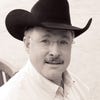
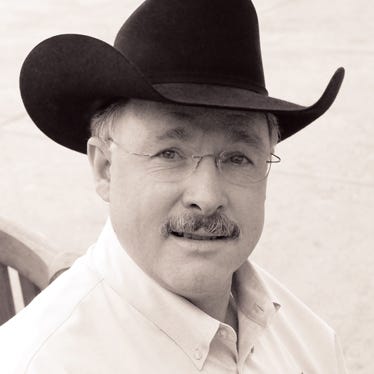


.png?width=300&auto=webp&quality=80&disable=upscale)
